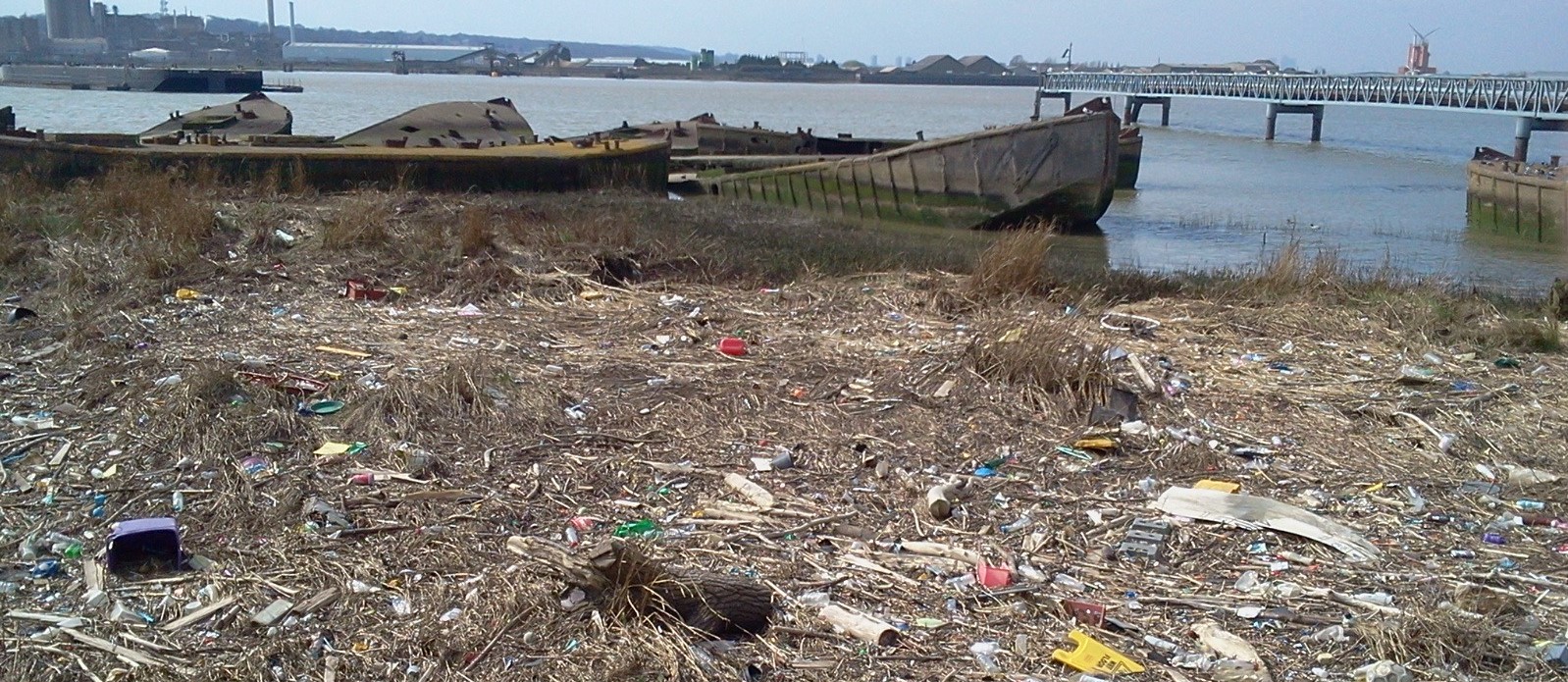Precious Thames saltmarsh bearing brunt of capital’s plastic tide, latest pollution data finds
Thames21 calls for tougher action on five key plastic items to tackle two-thirds of entire Thames plastic pollution
An analysis of citizen science surveys conducted on the Thames foreshore over the past five years reveals that precious saltmarsh areas on the fringes of London are being inundated with plastic waste such as plastic bottles and polystyrene. More than 65% of all plastic single-use plastic bottles recovered were found on saltmarsh and reedbed habitats on the edges of London, such as Rainham and Tilbury. Saltmarsh is a vital habitat for fish and wading birds.
Surveys of plastic waste left at high tide sites in London found that just five identifiable plastic items make up nearly two-thirds of lightweight plastic items found. Therefore, a concerted effort to reduce, ban, or recycle these items (confectionery food wrappers; cotton bud sticks; single-use drink bottles and lids; single-use plastic cups and take-away food containers) could massively reduce plastic pollution:.
Government and business need to prioritise tackling these five key items, said Chris Coode, deputy CEO at waterways charity Thames21, which compiled the report based on the five years of data. ‘While cotton buds and single-use water bottles are beginning to be tackled, we’ve had no action on confectionary food wrappers or plastic cups. These must become a priority.’
The Thames21 report Plastic Pollution in the River Thames highlights key actions to address the issue: phasing out single-use plastic and stocking with reusables, honest labelling, alternatives to confectionary packaging, and an all-in Deposit Return Scheme.
‘Our surveys of high tide sites in London show that these common lightweight plastic items float on the surface of the river, and then get deposited on the strandline at high tide,’ said Coode. ‘Reedbeds and saltmarsh areas on the edge of London have a larger surface area than central London sites. Their size and morphology means that they are trapping plastic waste. There’s now so much plastic in these saltmarsh habitats that you hear the plastic crunch under foot as you walk along.’
Microplastic and polystyrene are widespread on the Thames, the same report shows, found on 20 of the 21 sites where surveys occurred. Nurdles – small plastic pellets which are the raw material for the production of plastic products – have been found at nearly all the key waste hotspot sites. These are more commonly found on coastal beaches, and it is not clear whether they come from land or sea based sources
‘The presence of microplastic and polystyrene is a major issue in the Thames, too numerous to count and very difficult to remove via clean-ups,’ said Coode. ‘Microplastic will enter the food chain by being ingested by invertebrates, fish, mammals and birds.’
Another plastic threat highlighted by the report is that of wet wipe products – now the most common individual plastic-related item recorded in the Thames. Wet wipe products are accumulating in such numbers in six key locations that they have changed the shape and sediment type of the foreshore, with potential impacts on invertebrate life. In these areas wet wipes represent more than 90% of all waste items found, with between 50 to 200 found per square metre where they accumulate. Thames21 volunteer clean-ups routinely remove thousands of them from these sites, with 23,000 removed in just two hours in 2019.
The same report summarises data showing that concerted volunteer effort over the past twenty years has removed a historic legacy of large immobile items, such as industrial hardware, motorbikes and shopping trolleys, from the Thames foreshore. Unfortunately, the presence of plastic from consumer items and packaging has increased in the Thames over the same period.
Despite the huge impact of plastic on London’s rivers, there is no statutory monitoring of the issue. Thames21’s award-winning Thames River Watch citizen science programme fills the gap through free training to Londoners and operates from three hubs in London. In addition the programme runs two large citizen science counts a year, open to all.
One of the worst-hit Thames estuary reedbed sites features as part of a new series on sustainability issues with American actor Zac Efron airing on Netflix from 10 July, where he joins Thames21 to help clean up and monitor the plastic build-up.
Join the Thames River Watch as a citizen scientist by visiting: www.thames21.org.uk/project/thames-river-watch.
The Thames River Watch programme is funded by Tideway.
